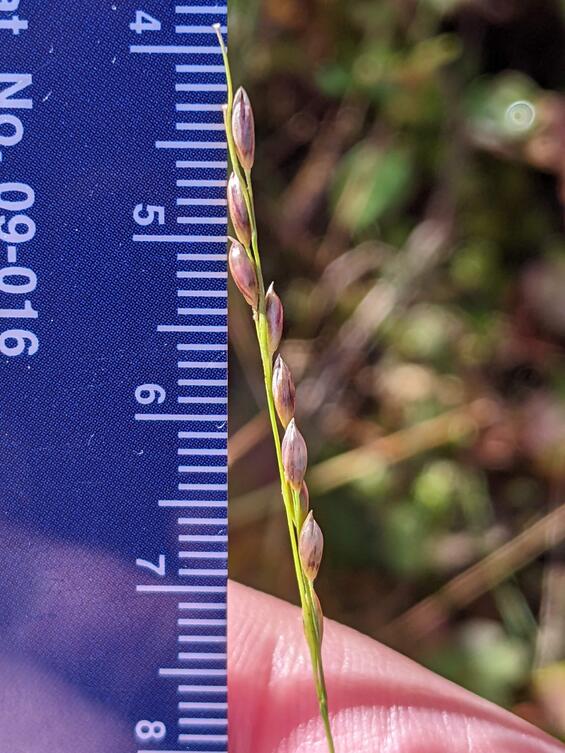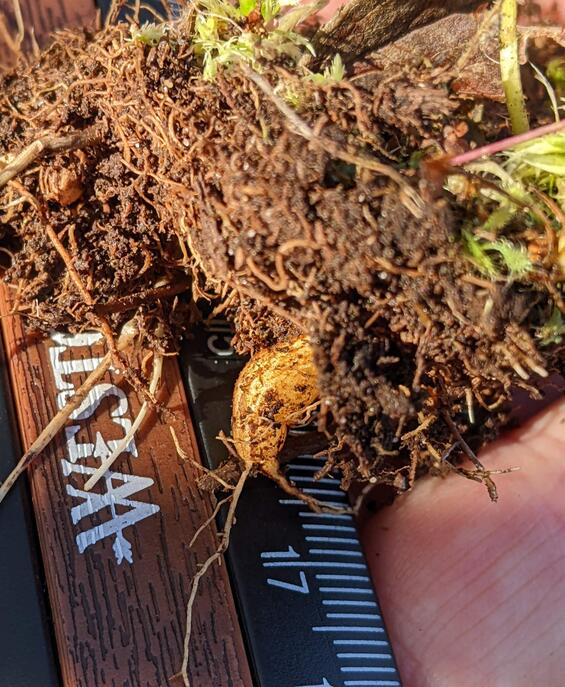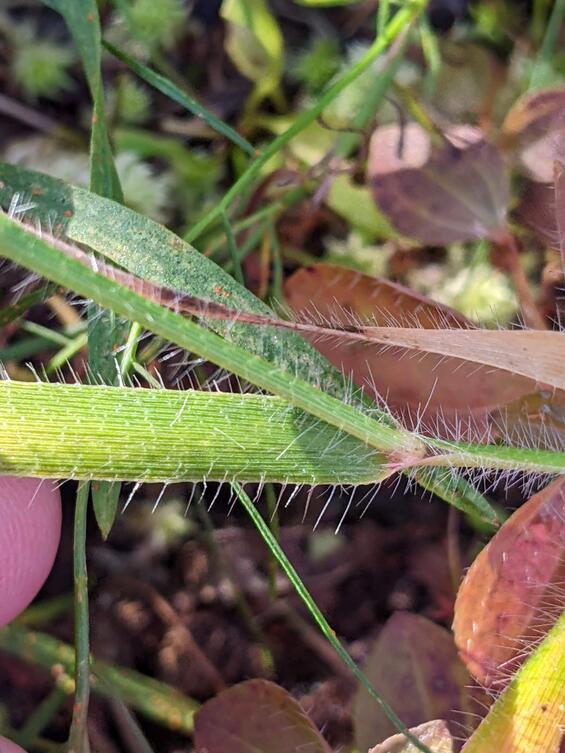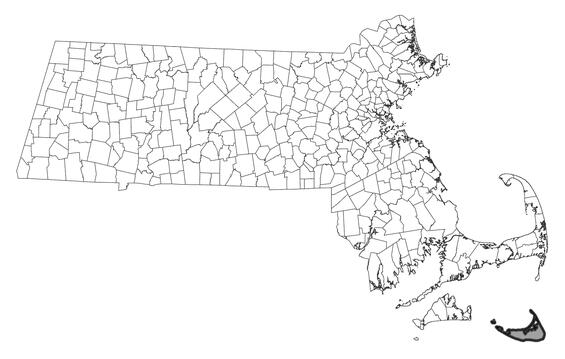- Scientific name: Amphicarpum amphicarpon (Pursh) Nash
- Species of Greatest Conservation Need (MA State Wildlife Action Plan)
- Endangered (MA Endangered Species Act)
Description

Annual peanutgrass (Amphicarpum amphicarpon). Photo credit: Robert Wernerehl
Annual peanutgrass (Amphicarpum amphicarpon) is a medium-sized (30-80 cm; 12-31 in), erect annual in the grass family (Poaceae), with hairy stem and leaves. The leaves are 10-15 cm (3.9-5.9 in) long, 5-15 mm (0.2-0.6 in) wide, and largely clustered at the lower end of the stem, becoming more sparse and smaller on the upper part of the stem. The leaf blades and the leaf sheaths–the lower part of the leaf that clasps the stem–are covered with short hairs that make them rough to the touch. The genus name, which translates to “double fruiting,” and the common name refer to the underground flowers produced by this species in addition to the more familiar above-ground inflorescence. The 5-15 cm (2-5.9 in) aerial inflorescence is either un-branched or has a few simple branches held close, with awnless, elliptical spikelets (4 mm; 0.16 in) held singly. The plump underground spikelets are 6-7 mm (0.24-0.28 in), each attached singly to a slender root-like branch.
Positive identification of grasses requires the use of specialized keys. The following features help to distinguish annual peanutgrass: above-ground spikelets dorsally compressed, with a single, often sterile terminal floret; lateral floret characterized by a glume-like sterile lemma; ligule finely divided resembling a ring of hairs; first glume short or absent; second glume the same size as the sterile lemma; and fertile lemma with scattered short hairs.
There are no similar species because annual peanutgrass is the only member of its genus in Massachusetts; the subterranean spikelets are diagnostic.

Photo credit: Robert Wernerehl

Photo credit: Robert Wernerehl
Population status
Annual peanutgrass is listed under the Massachusetts Endangered Species Act as Endangered. All listed species are protected from killing, collecting, possessing, or sale, and from activities that would destroy habitat and thus directly or indirectly cause mortality or disrupt critical behaviors. Annual peanutgrass is known in Massachusetts only from Nantucket County. The MassWildlife Natural Heritage & Endangered Species Program (NHESP) database has 1 record from Nantucket County that has been verified since 1999.
Distribution and abundance
Annual peanutgrass has limited range, occurring in disjunct populations from Massachusetts to Florida, including possibly extirpated New York, vulnerable in New Jersey, Maryland, North Carolina and South Carolina; imperiled in Delaware and critically imperiled in Massachusetts and Virginia. Florida has not ranked it (NatureServe 2025).

Distribution in Massachusetts
1999-2024
Based on records in the Natural Heritage Database
Habitat
Annual peanutgrass is typically found on the shores of small, sandy or peaty coastal plain ponds. Associated species include brown beak-sedge (Rhynchospora capitellata), pondshore flatsedge (Cyperus dentatus), threeway sedge (Dulichium arundinaceum), northern meadow-beauty (Rhexia virginica), Canada rush (Juncus canadensis), spatulate-leaved sundew (Drosera intermedia), and slender-leaved goldenrod (Euthamia caroliniana).
Healthy habitats are vital for supporting native wildlife and plants. Explore habitats and learn about conservation and restoration in Massachusetts.
Threats
The greatest threat to rare species and natural communities of coastal sand plains is habitat loss due to development. These sandy sites are particularly attractive for development since they are generally well-drained and have little topographic variation. Plants such as annual peanutgrass that are associated with moist pockets of soil are also threatened by water withdrawals that lower groundwater levels and by climate-change associated variations in patterns of precipitation and drought.
Conservation
Annual peanutgrass habitat should be protected from development and water withdrawals.
Survey and monitoring
Populations of annual peanutgrass should be monitored for invasions of exotic plants and over-abundance of native plants due to fire suppression.
Management
If exotic or native plants are competing with this species, a plan should be developed, in consultation with the NHESP, to remove the competitors. Known habitat locations should be protected from dramatic changes in light or moisture conditions. Rare plant locations that receive heavy recreational use should be carefully monitored for plant damage or soil disturbance; trails can sometimes be re-routed to protect populations of rare species. All active management of rare plant populations (including invasive species removal) is subject to review under the Massachusetts Endangered Species Act and should be planned in close consultation with the NHESP.
References
Britton, N.L., and A. Brown. 1913. An Illustrated Flora of the Northern United States, Canada and the British Possessions. 3 vols. Charles Scribner's Sons, NY.
Gleason, H. A., and A. Cronquist. 1991. Manual of Vascular Plants of Northeastern United States and Adjacent Canada, 2nd edition. The New York Botanical Garden, Bronx, NY.
NatureServe. 2025. NatureServe Network Biodiversity Location Data accessed through NatureServe Explorer [web application]. NatureServe, Arlington, Virginia. Available https://explorer.natureserve.org/. Accessed: 6/5/2025.
USDA, NRCS. 2010. The PLANTS Database (http://plants.usda.gov). National Plant Data Center, Baton Rouge, LA 70874-4490 USA.
Contact
| Date published: | April 7, 2025 |
|---|